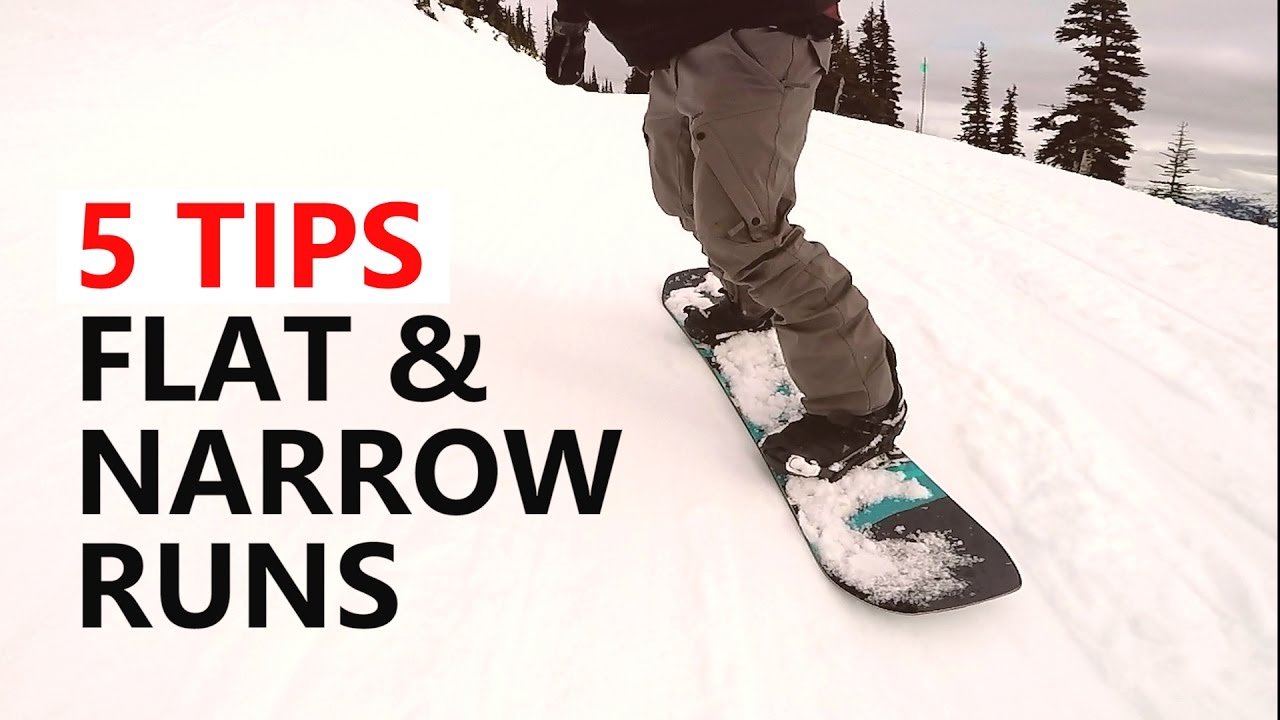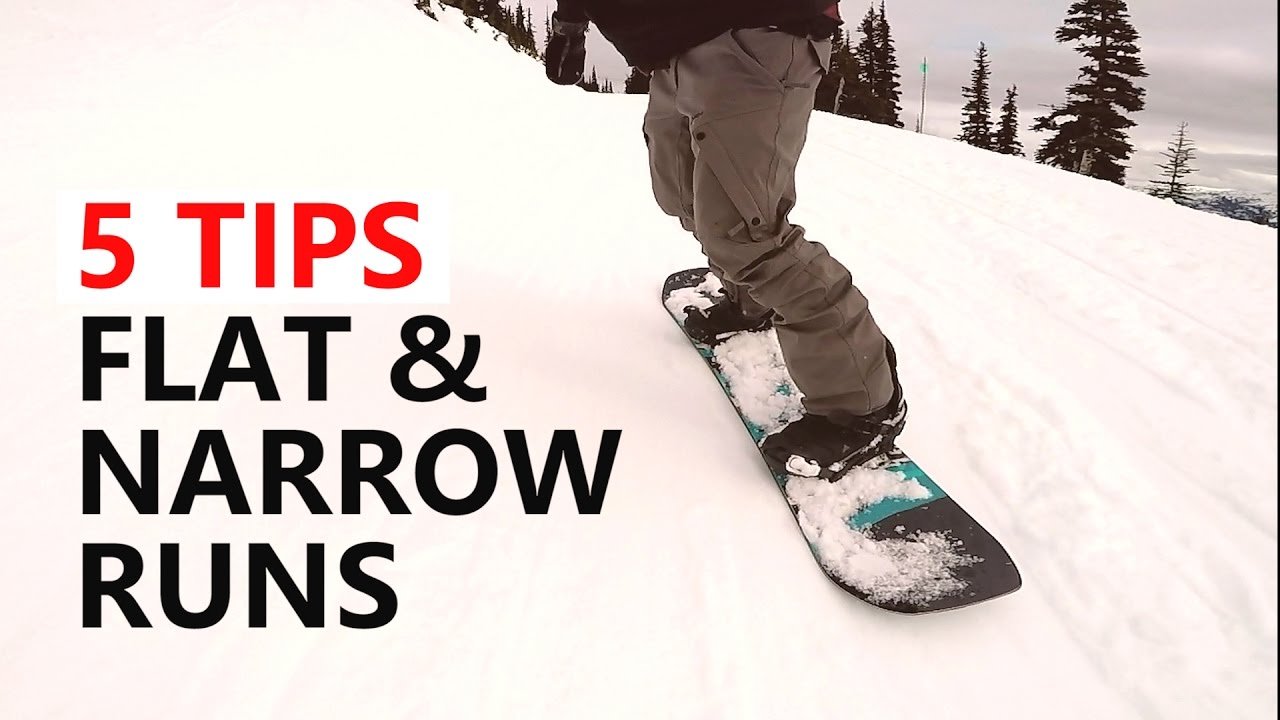
5 Tips To Survive Flat & Narrow Runs – Beginner Snowboard Tutorial
In this beginner snowboarding tutorial titled “5 Tips To Survive Flat & Narrow Runs,” SnowboardProCamp provides viewers with five essential tips to navigate and stay safe on flat and narrow runs. These runs can be particularly challenging for beginners and often lead to injuries. SnowboardProCamp offers valuable advice on how to improve turning, maintain control by using edges, balance properly, plan emergency stops, and make turns predictable. By following these tips, beginners can enhance their snowboarding skills and avoid potential accidents. For more beginner snowboarding tutorials, viewers can refer to the beginner snowboarding playlist and leave any questions or comments in the comments section. Stay safe and happy snowboarding!
Tip 1: Plan the run ahead
Planning ahead is crucial when tackling flat and narrow runs. As a beginner snowboarder, it’s important to anticipate changes in terrain and make proactive adjustments to your riding style. When you approach a transition from a steeper run to a flat run, you need to be prepared for the shift in your board’s edge contact with the snow. This transition can catch many riders off guard, leading to falls and injuries.
To avoid this, take the time to look ahead and assess the upcoming terrain. Slow yourself down before the transition point and adjust your turn style accordingly. By planning out your turns in advance and making them longer once you reach the flat area, you can prevent catching your edge and maintain better control over your snowboard.
Tip 2: Use your edges
When riding on flat runs, it’s tempting to let your snowboard go completely flat. However, this can lead to instability and loss of control. To stay in control, it’s important to keep your snowboard on a slight edge.
By maintaining a bit of edge contact with the snow, you can minimize sliding and unpredictability. Rocking from edge to edge allows you to alternate between leaning on your heels and toes, helping you maintain stability while riding on flat and narrow runs. This constant shifting and alternation between edges will keep you in control and prevent unexpected movements that could result in a crash.

Tip 3: Keep yourself balanced
Maintaining balance on flat and narrow runs is key to avoiding crashes. To achieve this, it’s important to focus on your body position and weight distribution.
Start by positioning your hands over the tail and nose of your board. This balanced hand placement will help prevent twisting and catching your edge. Bend your knees and keep your back fairly straight, creating a stable foundation on your board. By looking over your front shoulder and keeping your hands over the snowboard, you can ensure that you’re balanced and ready to react to any changes in the terrain.
Keeping yourself balanced will provide better control over your edges, allowing you to navigate the flat and narrow runs with greater confidence and safety.
Tip 4: Plan an emergency stop
In certain situations, you may need to perform an emergency stop on a narrow flat run. Planning for such stops ahead of time is essential to ensure your safety and the safety of those around you.
When executing an emergency stop, it’s best to face downhill and stop on your heels. This position allows you to maintain visibility of everything below you while coming to a quick halt. Additionally, try to choose a side of the run where you won’t obstruct other riders or skiers.
By planning how you’ll execute an emergency stop, you’ll be better prepared to react to situations where you need to control your speed or quickly come to a stop on a narrow and flat run.
Tip 5: Make your turns predictable
When riding on busy flat and narrow runs, making your turns predictable is crucial for everyone’s safety. By ensuring that other riders know which direction you’re going to turn, you minimize the chances of collisions and accidents.
To make your turns more predictable, consider counting in your head as you make each turn. By maintaining a consistent rhythm, your turns will become more even in size and timing. Additionally, looking ahead and selecting a narrow corridor to turn into will also make your intentions clear to other riders.
If you need to perform an emergency stop, signal your intention by putting your hand out to the side. This simple gesture alerts others that you’re about to stop and allows them to plan their movements accordingly.
Making your turns predictable not only keeps you safe but also helps create a more harmonious riding environment for everyone on the flat and narrow runs.
Benefits of planning ahead
Planning ahead provides several benefits when navigating flat and narrow runs. Firstly, it allows you to anticipate any changes in terrain and adjust your riding style accordingly. By being prepared, you can avoid catching your edge and potentially falling.
Secondly, planning ahead aids in maintaining a smoother ride. When you transition from a steeper run to a flat run, adjusting your turn style and lengthening your turns will help you maintain control and stability.
Finally, planning ahead promotes better decision-making on the slopes. By evaluating the terrain and anticipating any potential hazards, you can make informed choices about your route and riding techniques, reducing the risk of accidents or injuries.
The importance of using your edges
Using your edges effectively is crucial for proper control and stability on flat and narrow runs. Leaning on your heels or toes allows you to adjust your direction and navigate the terrain with ease.
By keeping your snowboard slightly on edge, you can minimize sliding and maintain better control over your movements. This technique is akin to skating on your snowboard, where having your board locked in on an edge provides greater control and predictability.
Using your edges ensures that you can make precise movements and changes in direction without fear of slipping or losing your balance. It is a fundamental skill that every beginner snowboarder should master to ride confidently on flat and narrow runs.
Maintaining balance to avoid crashes
Maintaining balance while riding on flat and narrow runs plays a vital role in preventing crashes and injuries. It involves being aware of your body positioning and distributing your weight properly.
Placing your hands over the tail and nose of your board helps keep you balanced and prevents twisting. By keeping your back fairly straight and your knees bent, you create a stable and centered stance on your snowboard.
Balancing your weight evenly and looking over your front shoulder ensures that you’re in control and prepared for any changes in terrain. Losing balance or catching your edge can result in falls or collisions, so it’s essential to maintain a balanced position throughout your ride.
What to consider when planning an emergency stop
Planning an emergency stop on a narrow flat run requires careful consideration to ensure your safety and the safety of others. When faced with the need for a sudden stop, remember a few key factors.
Firstly, facing downhill and stopping on your heels is the preferred method for emergency stops. This position allows you to maintain visibility and control while quickly slowing yourself down.
In addition to using your heels, choose a side of the run where your stop won’t obstruct other riders or skiers. By being mindful of your surroundings, you can ensure that your emergency stop doesn’t create hazards or accidents for others.
Remember to execute your emergency stop decisively and confidently to alert those around you to your intentions. With proper planning and execution, emergency stops can be performed safely and effectively on narrow flat runs.
Conclusion
To survive flat and narrow runs as a beginner snowboarder, it’s essential to follow these five tips: plan the run ahead, use your edges, keep yourself balanced, plan an emergency stop, and make your turns predictable. By anticipating changes in terrain, maintaining control with your edges, balancing yourself on the board, planning for emergency stops, and making your turns clear and predictable, you can navigate flat and narrow runs more safely and confidently.
Remember that practice is key to mastering these skills. The more you ride and apply these tips, the more comfortable you’ll become on flat and narrow runs. With time and experience, you’ll be able to handle these challenging terrains with ease and enjoy the thrill of snowboarding to the fullest. Stay safe, have fun, and happy shredding!
